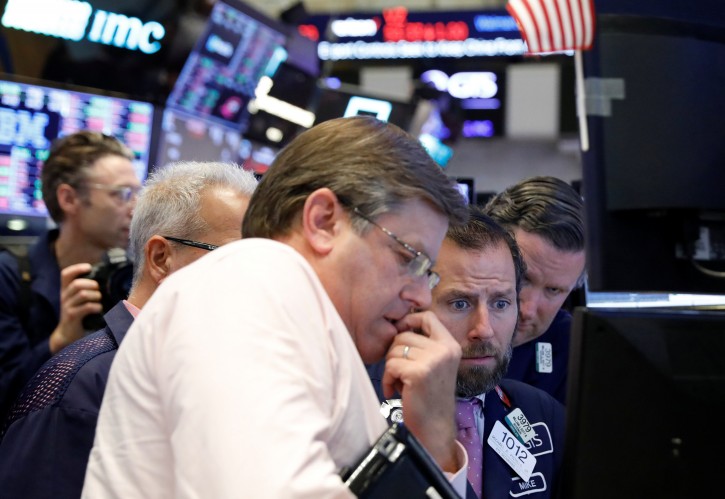
New York – Investors searching for perpetrators and victims in this week’s U.S. stock market selloff pointed to a familiar source: number-crunching fund managers and machines.
The benchmark U.S. S&P 500 stock index
< .SPX>
marked its biggest one-day fall since February and added to those losses on Thursday.
The carnage followed a debt market selloff this month driven by expectations that U.S. inflation will be strong enough to warrant further rises in interest rates the Federal Reserve, but not all investors think the selling made sense.
“Warren Buffett made his fortune by buying low and selling high,” said the billionaire hedge fund manager Leon Cooperman, founder of Omega Advisors Inc. “Machines buy strength and sell weakness and aggravate the moves. There was no reason for that kind of a move yesterday.”
The order of events, rising bond yields followed by a stock market selloff, recalled a similar event in February and also put focus on a host of mechanical investment strategies from risk-parity funds to commodity trading advisers (CTAs) and trend followers.
A 2017 paper by LongTail Alpha LLC chief investment officer Vineer Bhansali and USC Marshall School of Business professor Lawrence Harris estimated that total assets under management in a set of strategies that respond to risk is about $1.5 trillion, including risk-parity funds, volatility targeting funds, and trend followers.
“When there’s $1 trillion in mitigating the downside, there’s a good argument to be made that it actually creates more downside because now they’re all selling at the same time,” said David Lafferty, chief market strategist at Natixis Investment Managers.
“When everyone does it, they create the problem they’re trying to avoid.”
Michael Purves, chief global strategist at Weeden & Co, said the market action suggests rules-based, volatility-contingent investment strategies adjusted to the sharp selloff in long-term Treasuries.
“When massive elephants move stuff around it can drive a lot of violence,” he said. “It doesn’t mean equities are broken but it means in the medium term they get spicy.”
A strategy popularized after the wreckage of the 2008 financial crisis, “risk parity” often sees itself blamed when stocks see steep selloffs. Risk parity funds themselves, however, said they were not to blame.
Bob Prince, the co-chief investment officer at Bridgewater, said the world’s largest hedge fund’s All Weather strategy, which launched the risk-parity movement in 1996, does not actively trade and, while it does periodically adjust, has not done so since the market selloff began.
When those adjustments happen, they are generally restoring the fund to its original balance, buying those assets that have gone down and trading against the trend.
“Risk parity didn’t have anything to do with yesterday’s market movement,” said Prince. “We’re getting closer to the point that earnings growth could disappoint. As people get an inkling of that, probably the smart money’s getting out first.”
The strategy is an attempt to balance risk or volatility in asset prices across equity, debt and other assets, instead of a more traditional approach based on allocating capital across asset classes.
Investors often combine multiple assets within a portfolio but, risk parity backers argue, they do so in a way that still exposes them to too much equity risk and with too little a reward for doing so.
U.S.-based mutual funds using a risk parity strategy reported narrower losses than the S&P 500 index’s 3.0 percent tumble on Wednesday, but the declines nonetheless compounded their negative returns for the year.
Bridgewater’s All Weather Fund is down 0.6 percent this year, through September 30, the most recent data available, according to a person familiar with the fund but not authorized to discuss the performance publicly.
Risk parity funds often take a “leveraged” position in assets other than stocks, including bonds, borrowing money to increase the return, and they benefit from the fact that stock and bond prices often move in opposite directions. Now they, and all, investors face the prospect of declines in prices across many assets at the same time.
Yao Hua Ooi, a principal the global asset allocation team at AQR Capital Management LLC, said losses in U.S. Treasuries and stocks have been offset by gains in commodities and other positions the fund holds, and that they do not expect a significant adjustment given the changing risk in the market.
“The response to these changes are more gradual in nature,” he said. “They do not typically result in a knee-jerk reaction.”
As reported by Vos Iz Neias
